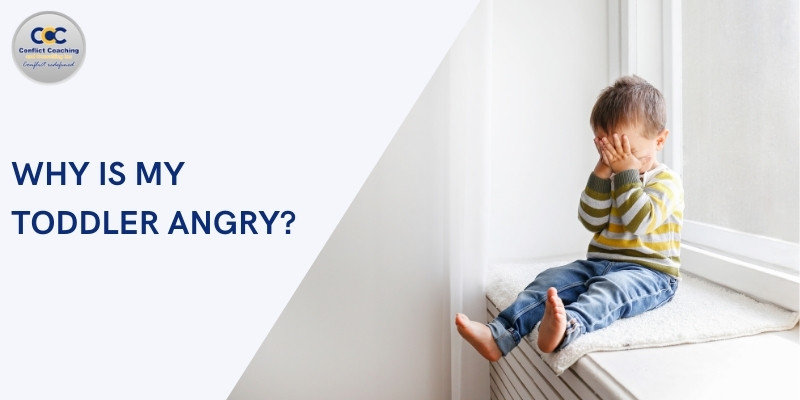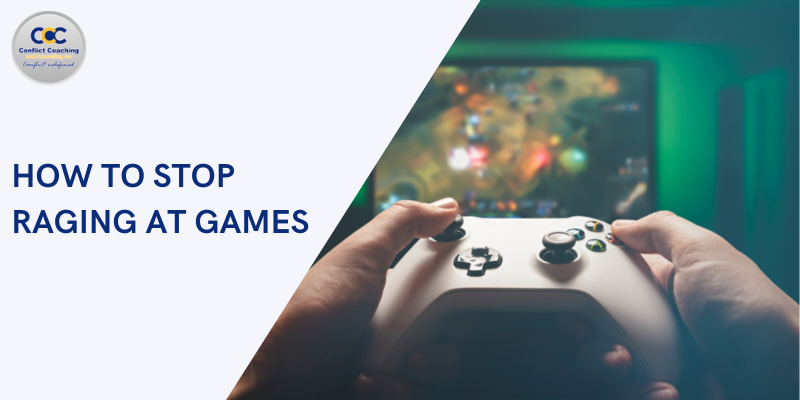
Why Is My Toddler Angry? How to Help Prevent It
Children acquire solid communication abilities at two and begin establishing their views, preferences, likes, and dislikes. At the same time, 2 and 3-year-olds have not yet learned patience, do not comprehend the concept of waiting, and cannot regulate their emotions.
Toddlers frequently act out when things do not go their way, or their wants are not satisfied. For example, they may scream, toss objects, yell, or strike.
As parents, you may teach your child how to deal with irritation and anger in various ways. If you want to help your toddler manage their anger, this blog is for you. Let’s find out how you can educate your toddler to respond to anger productively!
Why Should You Be Concerned About Your Toddler’s Anger?

Though anger is a normal emotion, if your toddler exhibits intense tantrums regularly, it may be an indication of something serious. You need to observe the symptoms and consult with your toddler’s doctor if:
- Your child has numerous explosive or volatile anger outbursts each day
- You’re scared they’ll damage themselves or others during tantrums
- Your toddler’s tantrums linger for long periods despite your efforts to moderate the behavior
A doctor will analyze the reason for these outbursts and provide you with strategies for anger management for toddlers.
Signs of Anger in Toddlers

Tantrums are a common way for toddlers to express their displeasure and dissatisfaction. According to the Yale Medicine Child Study Center, children under the age of four may experience up to nine tantrums every week on average. However, most youngsters will outgrow these outbursts by the time they attend kindergarten.
Some of the behaviors related to tantrums and rage in 1- and 2-year-olds include:
- Biting
- Crying
- Kicking
- Screaming
- Yanking or pushing
- Stomping
- Hurling objects
- Hitting
Toddlers will often outgrow these furious outbursts as their developmental skills advance. Teaching kids proper coping methods for their emotions can help them with their anger issues.
Causes of Anger in Toddlers

When a toddler faces a problem, is unable to convey their desires, or is denied a basic need, they may get irritable. Common causes of furious outbursts, anger, or tantrums among toddlers include:
- Being unable to express emotions
- Engaging with a sibling or another kid
- Not being given something they desire
- Playing with a toy or undertaking an activity that is difficult to figure out
- Feeling hungry or weary
- Change from customary and anticipated daily routine
Some circumstances can also make your child more prone to anger, such as:
- Parenting strategies
- Temperamental variations
- Early childhood stress
- Environment
- Genetics
- Family dynamics
You need to understand the reason for an angry outburst so you can help your toddler manage their anger without harming themselves or others.
6 Strategies To Help your Toddler To Manage Anger
If your toddler has furious outbursts, significantly if their anger interferes with their relationships and quality of life, you must give them the skills they need to deal with their emotions healthily. A mental health professional’s advice can also be highly beneficial.
Here are some of the strategies you can utilize to control extreme anger in toddlers :
1 – Teach Your Child About Feelings
When children do not comprehend their feelings or cannot express them verbally, they are more inclined to lash out. Dealing with toddler anger is complicated so you need to teach your toddler about feelings.
A youngster who can’t speak “I’m furious!” may try to express their anger by lashing out. If toddlers cannot express or understand their sadness, they tend to misbehave to seek your attention.
You can start your journey of discussing emotions and feelings by discussing emotional terms like “angry,” “glad,” “sad,” and “scared” to assist them in learning to recognize and define their emotions. Label your child’s emotions for them by saying, “It appears like you are quite furious right now.” They will eventually learn to identify their feelings.
Teach your child more advanced feeling terms like irritated, disappointed, concerned, and lonely as they have a deeper knowledge of their feelings and how to articulate them.
2 – Offer Rewards or Consequences When Necessary
When your children obey the anger rules, give them good consequences; when they breach the rules, give them negative points. When a youngster is agitated, positive consequences, such as a reward or token economy system, might inspire them to utilize anger management techniques.
If your youngster gets violent, impose swift penalties. Time-outs, loss of privileges, or making reparations by completing extra tasks or lending a toy to the object of their violence are all effective repercussions.
3 – Create an Anger Thermometer with your Toddler
Discuss what happens in your child’s body at each number on the thermometer when they are not disturbed or angry.
For example, when your child is at level 0, they may appear happy, but when they reach level 5, they may seem angry. When they reach 2, they may feel their face becoming heated, and when they reach 7, they may create fists with their hands. They may feel like angry monsters by the time they reach ten.
Using the thermometer teaches children to detect anger when it occurs. They will eventually realize that taking a break can help them calm down when their rage thermometer rises.
4 – Discuss Anger Coping Approaches
Children must learn proper methods to express their anger positively. For example, rather than being instructed, “Don’t strike your brother,” explain what kids can do if they are irritated. Say something like, “Next time, use your words” or “Walk away from him when you’re furious.”
You may also ask your child, “What might you do instead of hitting?” to assist them in developing methods that may be beneficial. You may also make a stress-relief kit that kids can use when angry.
Fill a box with goods that will help them relax, such as coloring books, crayons, scented lotions, or calming music. Using their senses might help them settle their mind and be considered to be useful steps to help your toddler manage their anger.
5 – Don’t Succumb to Tantrums
Sometimes children realize that expressing their anger is a practical approach to addressing their demands. For example, if a toddler throws a temper tantrum and you start rewarding them with a toy, the child will learn that temper tantrums can get him whatever he wants.
To avoid a meltdown, don’t give in to your youngster. Although it may be more straightforward in the short term, giving in will only exacerbate behavior issues and hostility in the long run. Instead, focus on bonding with your child, so they feel more assured that their needs will be satisfied.
Conclusion
Tantrums are common in angry toddlers. When your child is throwing a tantrum, try to apply parenting tactics that work for them.
Maintaining a regular schedule and assisting your child in expressing their feelings may help your toddler manage their anger. You will not, however, be able to prevent them all. Tantrums are an expected aspect of a toddler’s growth.
Even though there are anger management courses available for adults, finding one perfect for a toddler is almost impossible. If you are concerned that your toddler’s anger is excessive or poses a risk to your child or others, consult with their doctor.






Responses